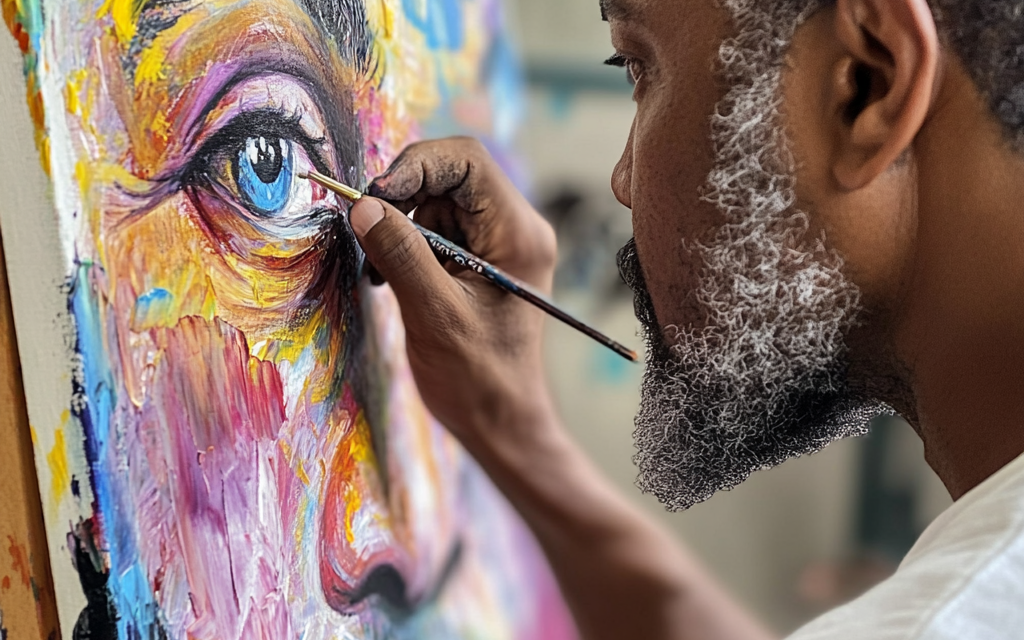
Art is one of humanity’s oldest and most profound forms of expression. It transcends language, culture, and time, allowing individuals to communicate emotions, ideas, and experiences in ways that words alone cannot. Whether through painting, sculpture, music, or dance, art captures the essence of human creativity and imagination, offering a window into the diverse perspectives and experiences that shape our world.
The Nature of Art
At its core, art is an exploration of the human experience. It is a reflection of emotions, thoughts, and events, often conveying what words alone cannot fully express. Art is subjective, and its meaning can vary greatly from one viewer to another. What one person may see as a powerful statement, another might interpret as a mere decoration. This diversity in interpretation is part of the beauty and power of art—it challenges individuals to think, feel, and reflect on what is presented.
The forms of art are as varied as the human experience itself. From traditional forms like painting, sculpture, and architecture, to modern mediums like digital art, performance art, and installations, art continually evolves to express the complexities of contemporary life. The impact of art is not limited to aesthetic enjoyment; it also serves as a catalyst for social change, a means of political expression, and a reflection of societal values and struggles.
The Different Forms of Art
- Visual Art: Visual art includes any form of art that is primarily visual in nature, such as painting, drawing, sculpture, and photography. Visual art is often considered the most accessible form of art because it is something that can be seen, experienced, and interpreted by almost anyone. Artists use color, shape, texture, and composition to create works that express emotions, ideas, and stories. Some of the most iconic works of art, like the Mona Lisa by Leonardo da Vinci or Starry Night by Vincent van Gogh, have become symbols of human creativity.
- Performing Arts: Performing arts such as theater, dance, music, and opera offer a more dynamic and temporal form of artistic expression. Unlike visual arts, which are static and fixed in time, performing arts are experienced live and unfold in real time. The physical presence of performers, their interactions with the audience, and the use of sound, movement, and voice create a unique form of connection. Whether it’s the grace of a ballet dancer or the emotion conveyed in a dramatic play, the performing arts evoke an immediate emotional response and allow for a shared experience between the artist and the viewer.
- Literary Art: Literature is another important form of art, with writing used to tell stories, convey emotions, and communicate ideas. From poetry and novels to essays and plays, literary art has the power to capture complex human experiences and ideas in words. The beauty of language, the rhythm of prose, and the depth of characters all come together in literature to create works that have the power to entertain, provoke thought, and stir emotions.
- Digital and Contemporary Art: With advancements in technology, digital art has emerged as a popular and innovative form of artistic expression. Digital artists use computer software, photography, animation, and other digital mediums to create works that are often interactive, immersive, or experimental. Video games, virtual reality (VR), and augmented reality (AR) are also branches of digital art that push the boundaries of what art can be, engaging the audience in new and exciting ways.
- Architecture: Architecture is a form of art that combines functionality with aesthetics. Architects design spaces and structures that not only serve a practical purpose but also create visual harmony and emotional impact. From ancient cathedrals to modern skyscrapers, architecture has the ability to shape how people experience and move through the world. The buildings we inhabit affect our moods, our social interactions, and our connection to the environment.
The Purpose of Art
Art serves many purposes, both personal and societal. On an individual level, it allows artists to express their inner thoughts, desires, and struggles. It provides an outlet for creativity and can be a source of personal healing or catharsis. For the viewer, art can evoke emotion, provoke thought, or inspire change. It can offer a new perspective on the world or serve as a way to escape reality.
On a broader scale, art has long played a role in shaping cultural identities and fostering social change. Throughout history, art has been used as a tool for political expression, challenging the status quo and advocating for justice. For instance, the works of artists like Picasso, Goya, and Dorothea Lange have captured moments of political unrest, human suffering, and societal injustice, inspiring movements and provoking deep reflection.
Moreover, art plays a significant role in preserving history. Through visual representation, music, and literature, artists capture important moments in time, ensuring that future generations can understand and appreciate the events that shaped their world.
The Impact of Art on Society
Throughout history, art has had a profound influence on culture, politics, and society. From the Renaissance to the modern era, the evolution of artistic movements has paralleled significant shifts in social, political, and economic structures. Art has always been a mirror to society, reflecting its values, struggles, and triumphs.
For example, during the Renaissance, art was used to convey religious and philosophical ideas, influencing the intellectual movements of the time. In the 20th century, the rise of abstract art challenged traditional notions of representation, allowing artists to explore new forms of expression and engage with the complexities of modern life. Similarly, political movements like the Civil Rights Movement in the United States saw artists using their craft to advocate for change and raise awareness about issues of racial injustice.
Today, art continues to play an important role in shaping conversations around social issues, environmental concerns, and identity. Contemporary artists tackle themes like climate change, gender equality, and the immigrant experience, encouraging viewers to think critically about these issues and their own place within them.
The Future of Art
As the world becomes increasingly digital and interconnected, the future of art is bound to evolve. New technologies such as virtual reality, artificial intelligence, and digital platforms are opening up exciting possibilities for artistic expression. Artists are exploring ways to create immersive experiences, allowing viewers to engage with their work in entirely new ways.
At the same time, the accessibility of online platforms has democratized the art world, allowing artists to reach global audiences without relying on traditional galleries or institutions. Social media, crowdfunding, and online art marketplaces are enabling a more diverse range of voices to be heard and appreciated.
In the coming years, the fusion of traditional and digital art forms, as well as the continued exploration of new technologies, will likely shape the future of art. This ongoing evolution ensures that art will remain a vibrant and essential part of human culture, continuing to inspire, challenge, and connect people across the globe.
Conclusion
Art is a universal language that transcends boundaries, communicating human experiences and emotions in ways that words cannot. From visual and performing arts to literature and digital creations, art shapes our understanding of the world and influences every aspect of our lives. It serves as a tool for personal expression, cultural reflection, and societal change, while offering a means to preserve history and challenge the status quo. As technology continues to evolve, so too will the forms of art, ensuring that it remains a powerful force in both individual lives and the broader cultural landscape.
